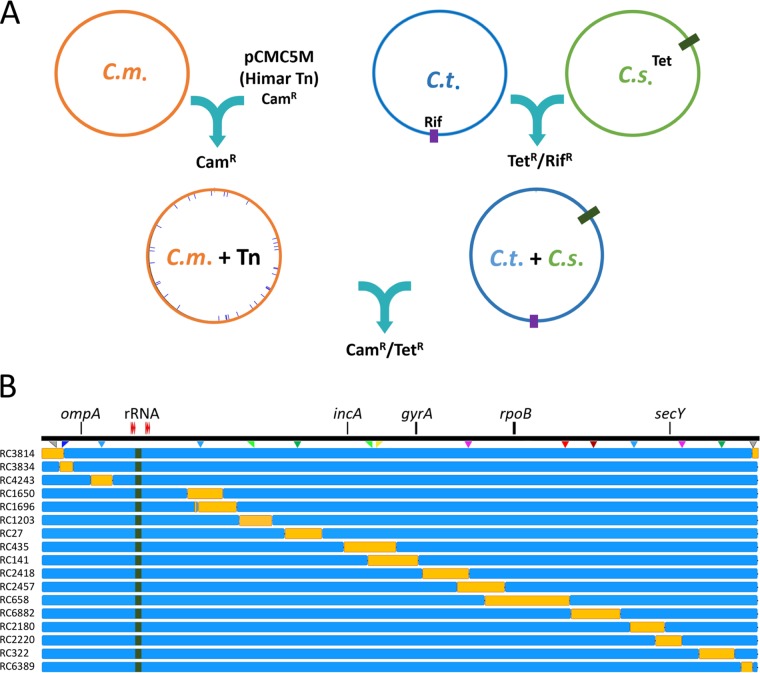FIG 1.
Generating interspecies recombinants from crosses between C. muridarum and C. trachomatis parents. (A) Transposon mutagenesis, as described in reference 10, led to the creation of a variety of randomly mutated, chloramphenicol-resistant C. muridarum strains (C.m. + Tn). C. trachomatis parents were generated by transferring the C. suis tet(C) locus, plus adjacent sequences, to rifampin (Rif)-resistant C. trachomatis strains D/UW3, L2/434, and F/70, using previously described methods (8). Cocultures of individual C. muridarum and C. trachomatis parent strains were then incubated in the presence of both Cam and Tc to select for recombinant progeny. (B) Doubly antibiotic-resistant strains were cloned by limiting dilution, and their genomes were sequenced. A linear representation of the C. trachomatis chromosome is shown (black line). The locations of selected genes are included for reference purposes. The location of the tet(C) locus is indicated with green shading in the individual recombinants and is in this position in each of the progeny strains generated by LGT. Seventeen individual recombinant strains (orange bars), which collectively represent 79% of the C. muridarum genome, are indicated. The complete list of recombinant strains is given in Fig. S1 and Table S1.

